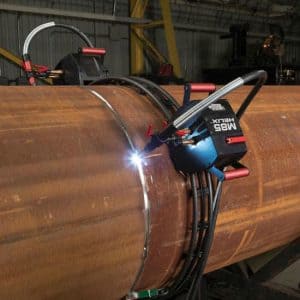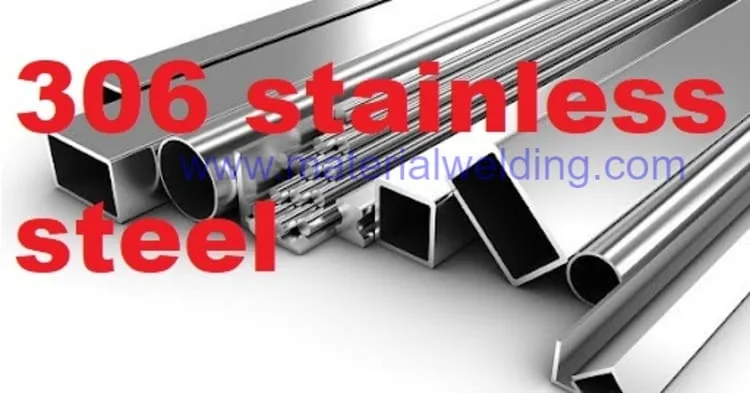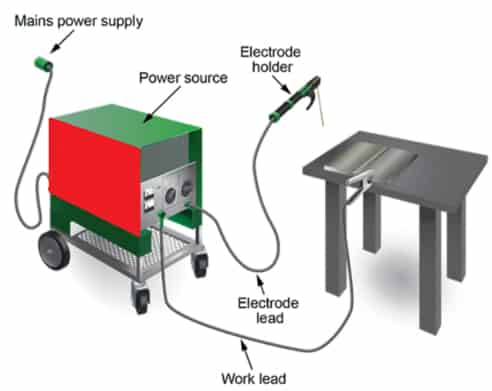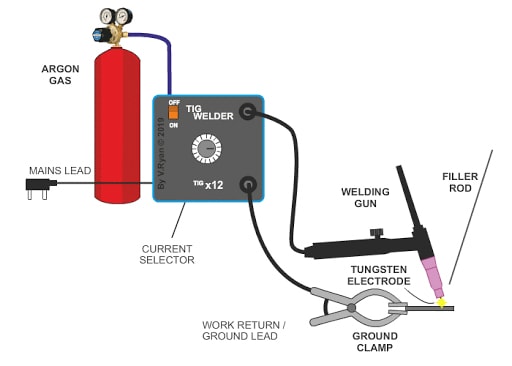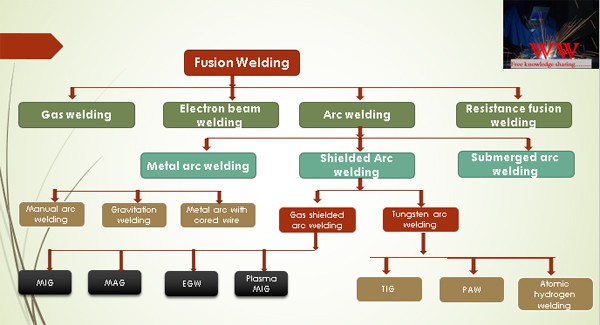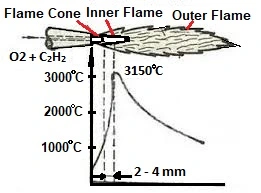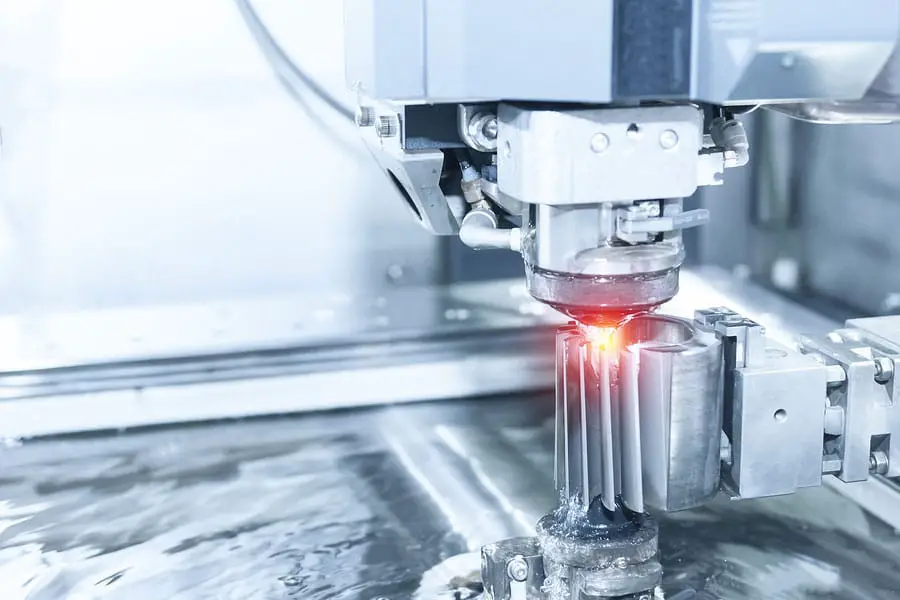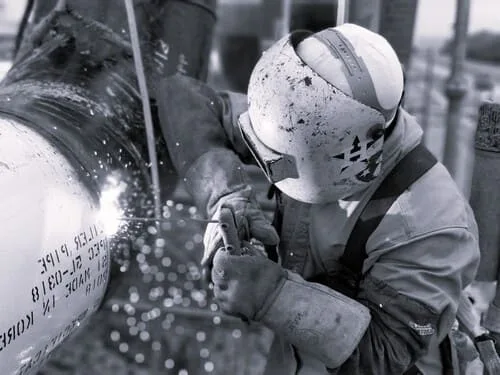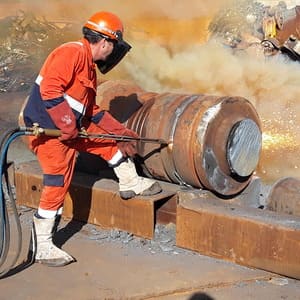MMA welding, also known as shielded metal arc welding, is a simple yet versatile process that can be used for welding almost any type of metal.
This article will provide a comprehensive overview of the MMA welding process, including its principles, equipment, advantages, and limitations.
By the end of this article, you’ll have a better understanding of what MMA welding is and how it works, and whether it is the right choice for your welding needs.
What is MMA Welding?
MMA welding, also known as Shielded Metal Arc Welding (SMAW), is a manual welding process that uses a consumable metal electrode, coated with a flux material, to generate an electric arc between the electrode and the workpiece.
The heat of the arc melts the surfaces of the joint and the metal electrode, creating a pool of molten metal that cools and solidifies behind the arc.
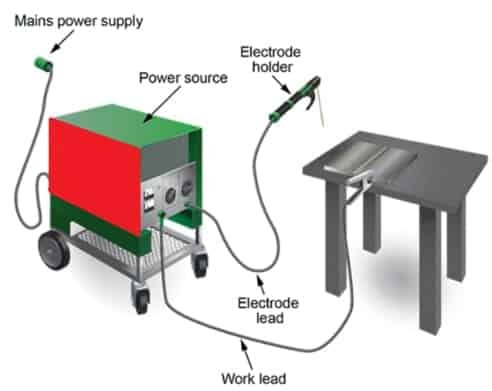
The flux coating on the electrode produces a gas shield that protects the molten metal from atmospheric contamination and provides a slag that covers the weld pool and protects it from oxidation and other contaminants until it cools and solidifies.
Principle of MMA Welding
The Manual Metal Arc (MMA) welding process involves establishing an arc between a metal electrode, coated with a protective layer, and the workpiece to be welded.
This generates heat, which melts the surfaces of the joint and the metal electrode.
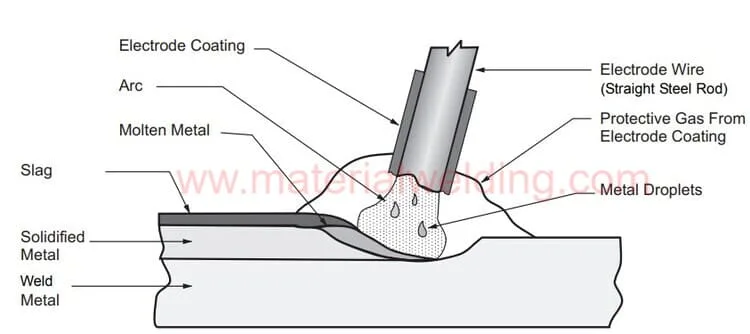
As the arc is moved at an appropriate speed along the joint, the molten metal from the electrode mixes with the molten base metal to form a solidified weld.
The electrical circuit used in MMA welding is straightforward and consists of a power source, with leads connecting to the workpiece and electrode holder.
The characteristics of the weld, such as the bead shape and metal properties, depend on various factors, such as the power source, electrode, joint design, and welding parameters, and the skill of the welder.
Therefore, selecting the appropriate parameters and equipment is essential for achieving a sound weld.
MMA Welding Polarity
In MMA welding, polarity refers to the direction of the electrical current flow between the metal electrode and the workpiece.
There are three types of MMA Welding polarity:
In DCEP polarity, the electrode is connected to the positive terminal of the power source, and the workpiece is connected to the negative terminal.
Related Reading: Science behind Welding Polarity.
This results in a high-temperature, deep-penetrating arc that melts the base metal, making it suitable for welding thick sections and providing good penetration. DCEP polarity is commonly used for welding mild and low-alloy steels.
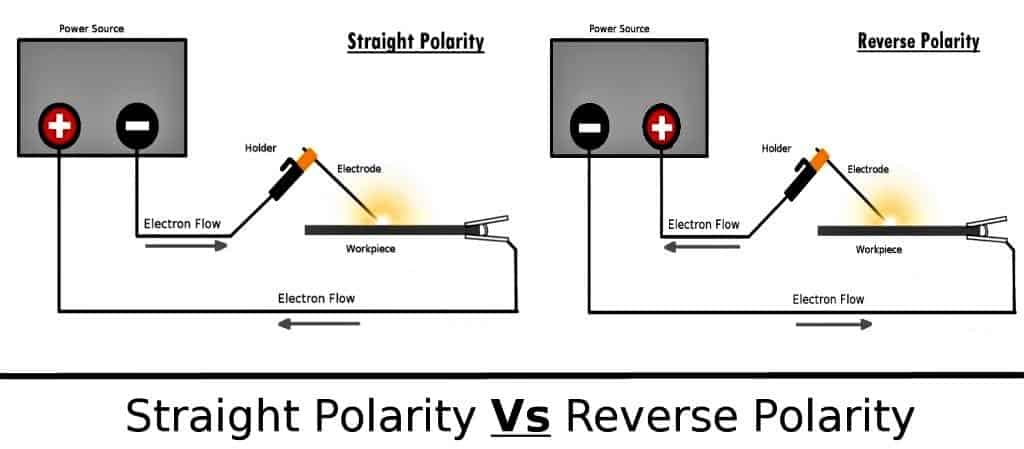
In DCEN polarity, the electrode is connected to the negative terminal of the power source, and the workpiece is connected to the positive terminal.
This polarity produces a cooler, more stable arc, making it suitable for welding thinner materials and providing less penetration.
DCEN polarity is commonly used for welding nonferrous metals, such as aluminum, copper, and nickel alloys.
The selection of polarity depends on various factors, such as the type of electrode, base metal, and desired weld characteristics. The welder should consider the requirements of the specific welding task when selecting the polarity.
Advantages of MMA Welding
MMA welding, also known as Stick Welding, has several advantages that make it a popular welding process for a wide range of applications.
Some of the advantages of MMA welding are:
- Versatility: MMA welding can be used to weld a wide range of materials, including carbon steel, stainless steel, aluminum, and cast iron.
- Portability: MMA welding equipment is portable and can be used in remote locations where access to power sources may be limited.
- Flexibility: MMA welding can be used to weld in all positions, including overhead and vertical.
- Minimal equipment and training: MMA welding equipment is relatively inexpensive and requires minimal equipment and training compared to other welding processes.
- Good penetration: MMA welding provides good penetration and can be used to weld thick sections of metal.
- Suitable for repair work: MMA welding is suitable for repair work and can be used to weld damaged parts without the need for disassembly.
- No gas required: MMA welding does not require a shielding gas, as the flux coating on the electrode produces a gas shield that protects the molten metal from atmospheric contamination.
Disadvantages of MMA Welding
While MMA welding has several advantages, it also has some limitations and disadvantages. Some of the disadvantages of MMA welding are:
- Low welding speed: MMA welding has a lower welding speed compared to other welding processes, such as MIG and TIG welding, making it less suitable for high-volume production.
- Lower deposition rates: MMA welding has lower deposition rates than other welding processes, which can increase the time and cost of welding large components.
- Limited weld quality control: MMA welding requires more manual control compared to other welding processes, which can result in less consistent weld quality.
- Need for electrode change: The electrode in MMA welding is consumed as it is used, which requires frequent electrode changes, resulting in interruptions to the welding process.
- Slag removal: MMA welding produces slag, which must be removed after welding, adding to the post-welding cleanup time and effort.
- Risk of porosity: Porosity, or the presence of small voids or gas pockets in the weld, is a common issue in MMA welding, particularly when the welding parameters are not carefully controlled.
Despite these limitations, MMA welding remains a popular and useful welding process for many applications, particularly in situations where portability, versatility, and simplicity are important factors.
Applications of MMA Welding
MMA welding is a versatile welding process that can be used in a wide range of applications across various industries.
Some of the common applications of MMA welding are:
- Construction,
- Oil & gas,
- Maintenance and repair,
- Shipbuilding,
- Fabrication,
- Automotive industry,
- Aerospace industry,
- Artistic work.
MMA Welding Electrode Types
MMA welding electrodes are available in various types and sizes, each with its unique characteristics and applications. Here are some of the common types of MMA welding electrodes:
- Rutile electrodes: Rutile electrodes are the most widely used MMA welding electrodes. They produce a smooth, stable arc and are easy to use, making them suitable for welding in all positions. They are commonly used for welding mild steel and low-alloy steel.
- Basic electrodes: Basic electrodes are used for welding high-strength steels and metals that are difficult to weld. They produce a deep penetrating arc and are less sensitive to impurities in the base metal, making them suitable for welding in challenging conditions.
- Cellulosic electrodes: Cellulosic electrodes are used for welding thick sections of steel and for vertical-down welding. They produce a deep, penetrating arc and can produce a high deposition rate.
Related reading: MMA Welding Electrodes Coating Types
MMA Welding vs Arc Welding
MMA welding, also known as manual metal arc welding, and arc welding are both welding processes that use an electric arc to join two metals together. However, there are some differences between the two processes.
| Feature | MMA Welding | Arc Welding |
|---|---|---|
| Electrode | Consumable coated electrode | A non-consumable electrode or filler wire |
| Electrode Position | Manually adjusted | Automatically adjusted |
| Welding Positions | Suitable for various positions | Limited to flat or horizontal positions |
| Equipment Size | Smaller and more portable | Larger and less portable |
| Welding Quality | Good for thicker materials or where deep penetration is required | Good for thinner materials or where precise control is required |
| Welding Applications | Field welding, maintenance and repair work, construction | Fabrication, automotive, aerospace, heavy industries |
MMA welding is a type of arc welding that uses a consumable electrode coated in flux to create an arc that melts the base metal and the electrode.
The molten metal is then used to create a weld joint. MMA welding is a versatile welding process that is suitable for welding in various positions and is often used for field welding, maintenance and repair work, and in construction.
Arc welding, on the other hand, is a broader term that includes various welding processes, including MMA welding.
In general, arc welding uses an electric arc to melt the base metal and the electrode or filler metal to create a weld joint. Other types of arc welding include TIG welding, MIG welding, and flux-cored arc welding.
MMA Welding vs TIG Welding
| Feature | MMA Welding | TIG Welding |
|---|---|---|
| Electrode | Consumable coated electrode | Non-consumable tungsten electrode |
| Filler Material | Consumable electrode | Separate filler wire |
| Welding Positions | Suitable for various positions, although some rods can be used in certain positions. | All position welding without any restriction. |
| Welding Quality | Good for thicker materials or where deep penetration is required | Excellent control over heat input and weld pool, suitable for thin and delicate materials |
| Welding Speed | Relatively slow compared to other processes | Slower than MMA welding |
| Site Welding | Suitable for outdoor welding applications. | Not suitable for outdoor welding. |
| Welding Gas | No external welding shielding gas is required. | External welding shielding gas is required to protect weld pool. |
| Welding Quality | Good. | Excellent welding quality |
| Welding Applications | Field welding, maintenance and repair work, construction | Aerospace, automotive, precision welding |
Most Commonly used MMA Welding Electrodes
Here are some commonly used MMA welding electrodes along with their classification codes and applications:
- E 6013 (or E 38 0 RC 11): These electrodes are rutile-coated and are suitable for welding mild steel. They have a smooth arc and are easy to use, making them ideal for beginners or DIY projects.
- E 7018 (or E 48 0 RC 11): These electrodes are low-hydrogen and are commonly used for welding low-alloy and high-strength steels. They produce strong, high-quality welds and are often used in structural welding applications.
- E 6010 (or E 38 3 C 21): These electrodes are cellulose-coated and are commonly used for welding pipelines and pressure vessels. They provide deep penetration and strong, reliable welds.
- E 7016 (or E 42 4 B 12 H5): These electrodes are medium-basic and are suitable for welding low-alloy and carbon steels. They produce high-quality welds with good mechanical properties.
- E 8018 (or E 55 5 Mn B 12 H5): These electrodes are high-strength and are commonly used for welding heavy-duty structures, such as bridges and pressure vessels. They produce strong, crack-resistant welds and have excellent mechanical properties.
